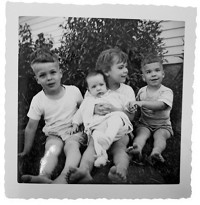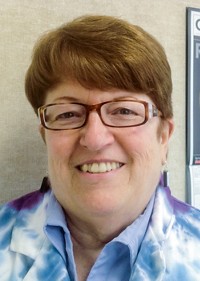Advertisement
Grab your lab coat. Let's get started
Welcome!
Welcome!
Create an account below to get 6 C&EN articles per month, receive newsletters and more - all free.
It seems this is your first time logging in online. Please enter the following information to continue.
As an ACS member you automatically get access to this site. All we need is few more details to create your reading experience.
Not you? Sign in with a different account.
Not you? Sign in with a different account.
ERROR 1
ERROR 1
ERROR 2
ERROR 2
ERROR 2
ERROR 2
ERROR 2
Password and Confirm password must match.
If you have an ACS member number, please enter it here so we can link this account to your membership. (optional)
ERROR 2
ACS values your privacy. By submitting your information, you are gaining access to C&EN and subscribing to our weekly newsletter. We use the information you provide to make your reading experience better, and we will never sell your data to third party members.
Education
Superstars In Chemistry Education
Three stellar ACS members show deep dedication to students
by Tom Barton, ACS Immediate Past-President
April 27, 2015
| A version of this story appeared in
Volume 93, Issue 17

One of the truly nice things about being American Chemical Society president last year was getting to put faces on the frequently heard statement, “ACS is all about volunteers.” It was an eye-opening experience, especially in the arena of education, probably because I am so aware of the numerous calls on the time of the people working in this area, and particularly since I’ve been going about giving a sobering talk about the problems facing quality K-12 education in the U.S., which seemingly should chill the enthusiasm of those attempting to buck this tide. At least in many cases, I have been dead wrong.
I remember well presenting this talk in South Florida and then going out to dinner with a group of high school and college chemistry teachers. For more than an hour, I listened in awe to their enthusiastic chatter about teaching tricks, heartwarming classroom successes, and kids they had turned around. They really loved their jobs, and they gave freely of themselves far, far beyond any reasonable call of duty.
One of the people at dinner was Milagros (Milly) Delgado. As it turns out, I already knew Milly, having run into her during national meetings at various committee meetings almost every time I turned around.
At first I actually assumed that she was an ACS staff member. Not so. In fact it is not unusual to find her teaching as many as four different courses in the same semester at Florida International University (FIU). But this and all her ACS activities still far from capture the soul of Milly Delgado, who expends seemingly every other moment in volunteer activities.
Her proudest moments are those spent mentoring students whose potential she first identifies in her general chemistry lectures. She finds them positions working in the chemistry stockroom and preparing teaching laboratories, continuously mentors them with regard to career goals and proper courses for success, and gets them involved in chemistry clubs and research. She even has the most successful ones present undergraduate lectures under her tutelage.
One of her mentees wrote, “Dr. Delgado has been my mother figure at FIU for three years. She constantly encourages and pushes me to be the best I can be in all aspects of life.” There is no higher praise for an educator.

Milly also serves as a coadviser to FIU’s award-winning science club, which she describes as “quite time-consuming but equally rewarding.” However, not content to restrict her herculean activities to FIU, Milly has for the past four years hosted a hands-on, inquiry-based workshop for high school chemistry teachers, sponsored partially by an ACS local section grant. Every year, 30–40 attendees complete inquiry-based experiments and receive a CD with lesson plans and detailed instructions. Milly stays in contact with these teachers and encourages them in every possible way.
I asked Milly, if she had one wish, what would it be? Perhaps not surprisingly, she asked for a 25-hour day.
I first learned of the existence of Sarah Johnson when she e-mailed the ACS president (not by name) inquiring as to the possibility of getting a donation for a fund-raiser she was organizing. Leery of establishing a precedent, yet curious as to the nature and origin of this event, I replied and discovered a tale that touched my heart.
Sarah is a remarkable young woman working as a lab teaching assistant while pursuing an M.S. in chemistry at East Tennessee State University (ETSU) and also holding down a full-time job as an analytical chemist for Unimin Corp., a producer of high-purity quartz.
When ETSU suffered a devastating budget cut, which it homogeneously distributed, the chemistry department found itself challenged to pay for teaching-lab supplies and repair of essential instruments. The expected response from chemistry students, if any, might be “Not my problem,” “So what?” “S*** happens,”or “I think I’ve got enough jobs already.” Not Sarah, and in her own words: “It broke my heart when I learned how much the chemistry department was struggling. I’m just a graduate student … but when I heard about this, I knew I just couldn’t sit by and watch.”
She came up with the idea of holding a 5K “color run” to raise money, and the department agreed. Color runs, which have “color stations” along the route where runners get colored cornstarch thrown at them and finish looking like a big human tie-dye, are not new event concepts. However, to the combined knowledge of Sarah and me, a chemistry-themed color run was unique.
Sarah decided that the dyed cornstarch should be given names of the elements used to color fireworks:Yellow was sodium, blue was copper, green was barium, and red was strontium. Runners were encouraged to wear lab coats, safety glasses, and other chemistry-themed apparel. On race day there were 82 runners and 64 volunteers. The fund-raiser brought in $8,404 which, after deducting expenses, left $6,223, all of which went to the operational budget of the ETSU chemistry department. Sarah has agreed to organize this event again in 2015, so if you are as inspired by the Sarah Johnson chemistry color run story as I am, you can contact colormechemistry@gmail.com to find out how you can help (and put a big smile on your face).
I met Derrick Wood when he was receiving the Philadelphia Section’s 2013 award for excellence in chemistry teaching at the secondary level. When Derrick graduated magna cum laude from Drew University with a B.A. in chemistry, a minor in secondary education, and significant research experience, he was equipped to do pretty much whatever he wanted to do in chemistry.

And that is exactly what he did: He realized during his final semester while participating in student teaching that teaching chemistry to high school students was his true calling. Thus, he went on to earn a master’s degree in chemical education from the University of Pennsylvania, as well as a master’s of education with leadership emphasis from Cabrini College.
Derrick is now on the faculty of Conestoga High School in Berwyn, Pa., and mainly teaches Advanced Placement Chemistry, honors chemistry, accelerated chemistry, and both chemistry and science independent study classes while also serving as the head coach of the Conestoga Science Olympiad team.
This no more defines Derrick Wood than “on the chemistry faculty of FIU” would define Milly Delgado. Derrick is the consummate teacher and says his greatest joy in life is teaching students. He says he truly enjoys “getting to know new students every year and watching them mature from skeptics to blossoming chemists.” He stays in touch with his former students and rejoices in their successes as he sees them go on to medical schools, become engineers, and pursue Ph.D.s in various sciences.
Derrick is constantly seeking ways to involve his students in a varied array of learning experiences. When he designs a new laboratory exercise, he gets the students involved. Thus, they “own” the experiment when they finally get to do it.
An excellent example is his analytical experiments, where Derrick has been tireless in facilitating donations of equipment retired from industrial use, including high-performance liquid chromatographs, gas chromatographs, and autotitrators. Derrick and his students rebuilt a functional HPLC, optimized to separate and quantify mixtures containing caffeine. Together they then developed experiments quantifying caffeine in teas, coffee, energy drinks, and sodas.
Recently, one of Derrick’s former students had the rare honor of having his undergraduate research at Pennsylvania State University published in Nature. He sent Derrick an e-mail about this recognition and noted that his high school experience determining the effects of brew temperature on the amounts of caffeine in coffee was a truly defining moment in his life. Making a significant, positive difference in a youth’s life is a true joy of teaching.
Derrick admits that it is extremely difficult to balance the teaching workload with his myriad extracurricular activities, such as Science Olympiad, Chemistry Olympiad, and science fair independent research projects, coupled with experimentation and innovation in the classroom. I suspect that he too would wish for a 25-hour day, if not longer.
When you consider all of the things that can inhibit high-quality teaching in our high schools, including lack of parental interest, focus on athletics, political and religious attempts to replace science with the supernatural, teachers’ unions (which, for example, don’t want educators’ rewards or penalties to be based on teaching quality), drugs, hunger, inappropriate curricular requirements for chemistry teachers at colleges of education, and more, it is a wonder that we still have many outstanding teachers. I dream of a day when all of our high school students are taught by their own Derrick Woods, go to college to be mentored by someone like Milly Delgado, and have dedicated, beyond-the-call TAs like Sarah Johnson.
Views expressed on this page are those of the author and not necessarily those of ACS.




Join the conversation
Contact the reporter
Submit a Letter to the Editor for publication
Engage with us on Twitter